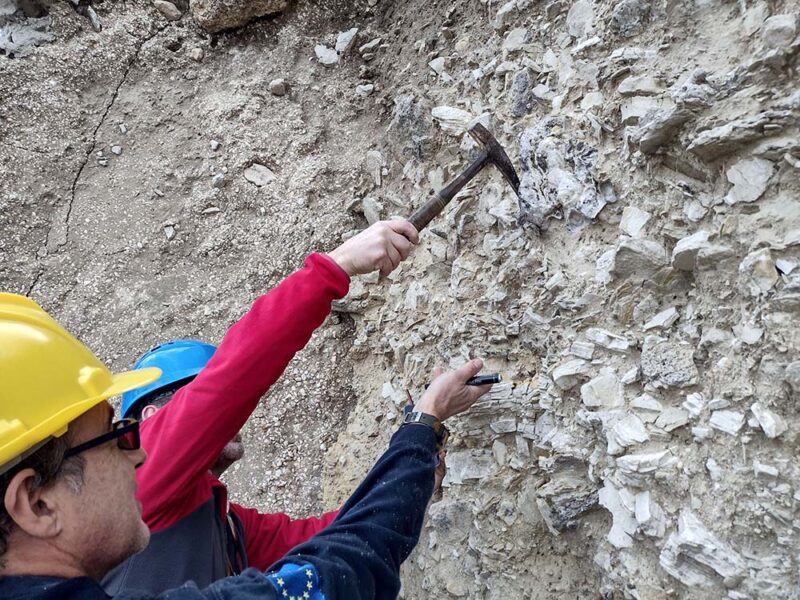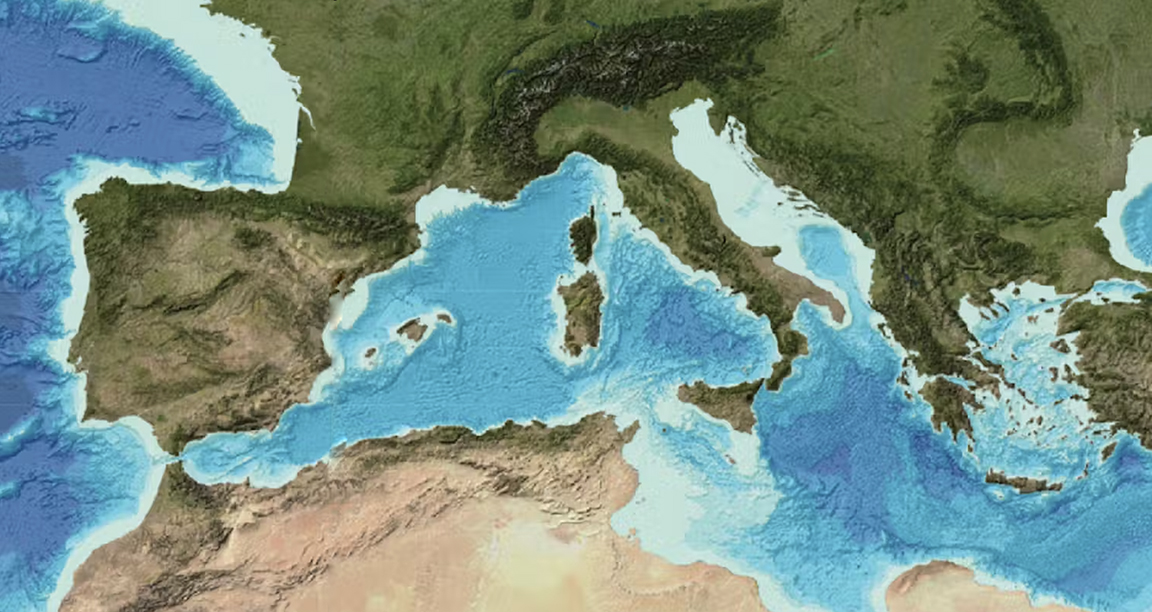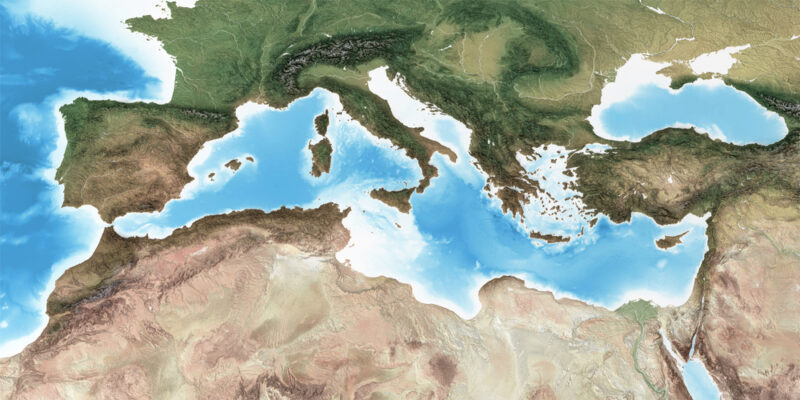Imagine the entire Mediterranean Sea disappeared, leaving behind an empty, sun-baked salt plain stretching from Spain to the Middle East. Then imagine the Atlantic Ocean suddenly crashing through a narrow strip of land at such high speeds that it refills the entire sea in less than two years. It sounds like a scene from a sci-fi movie, but that is actually what researchers believe happened about five million years ago.
Known as the Zanclean Megaflood, it was the most colossal flood in history. Researchers studied geological features off southeastern Sicily to better understand how it occurred.
“The Zanclean Megaflood was an awe-inspiring natural phenomenon, with discharge rates and flow velocities dwarfing any other known floods,” said Aaron Micallef, lead author of the study. “Our research provides the most compelling evidence yet of this extraordinary event.”

Team members inspect an exposed section of sediment deformed by the megaflood. Photo: Daniel Garcia Castellanos
The original sea dries up
Around six million years ago, the Mediterranean Sea was cut off from the Atlantic. With no incoming water and a hot, dry climate, the sea transformed over time into parched salt flats. This so-called Messinian Salinity Crisis lasted for 600,000 years.
Previously, scientists thought the Mediterranean gradually refilled over 10,000 years. Now, it seems it happened within a couple of years, as water 1,000 times the volume of the Amazon River rampaged past the Strait of Gibraltar and into the salt-encrusted basin.
In 2009, researchers found an erosion channel running across the Strait of Gibraltar and deduced that a ginormous flood had created it. Some were skeptical due to lack of evidence. So various teams investigated further and found some evidence on the Sicily Sill.

Sicily still divides the Mediterranean’s deeper basins, dark blue, with shallower regions. Photo: GEBCO/National Oceanographic Centre
The Sicily Sill
The Sicily Sill was once a land bridge that separated the western and eastern Mediterranean basins. Studying 300 of its ridges, researchers found that the material that should have been on its slopes was on its ridgetops. Depositing this rock on top would have required a huge amount of force and speed.
The hills also have a shape similar to those in Washington State, which a megaflood created at the end of the last ice age.
Seismic reflection data also show a huge W-shaped underwater channel running into the eastern basin that supports the theory of this megaflood.
As a final step, the researchers created a computer simulation of the event. It revealed that water from the Atlantic surged through the narrow Strait of Gibraltar at a staggering 32 meters per second (115 kph).






